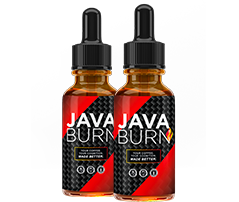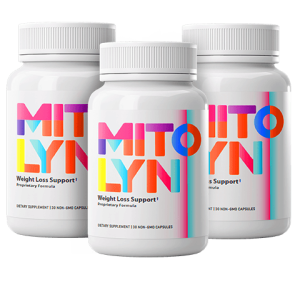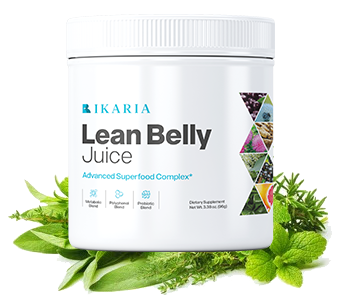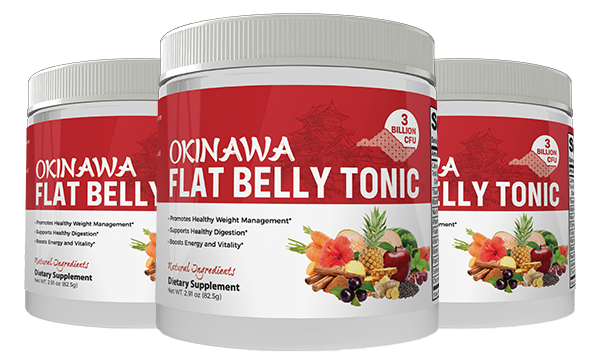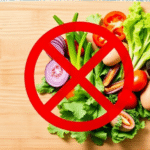Can You Lose Fat and Build Muscle at the Same Time?
Many people wonder if it’s possible to lose fat while building muscle at the same time. The good news is, yes, you can achieve both! This process is often referred to as body recomposition, and it involves creating a balance that allows you to shed unwanted fat while gaining muscle. To help you understand how this works, we’ll explore key strategies that can lead you to success on this journey.
Understand Your Caloric Needs
The first step to losing fat and building muscle is understanding your body’s caloric needs. You must create a slight caloric deficit to lose fat while ensuring you consume enough protein and nutrients to support muscle growth. Use a calorie calculator to determine your maintenance calories and subtract around 250-500 calories, depending on your activity level.
Prioritize Protein Intake
Protein is crucial for muscle repair and growth. When aiming for body recomposition, you should consume sufficient protein daily. Here are some tips:
- Daily Intake: Aim for approximately 1.6 to 2.2 grams of protein per kilogram of body weight.
- Protein Sources: Include lean meats, fish, dairy, legumes, and plant-based proteins in your meals.
- Protein Timing: Consider distributing your protein intake evenly across meals to optimize muscle synthesis.
Implement Resistance Training
Resistance training is essential for building muscle. Incorporate weightlifting into your fitness routines to create the stimulus needed for muscle growth. Follow these guidelines:
- Frequency: Train major muscle groups 2-3 times a week.
- Intensity: Use a weight that challenges you while allowing you to maintain proper form.
- Progressive Overload: Gradually increase the weight or number of repetitions each week.
Cardio for Fat Loss
While resistance training builds muscle, cardiovascular exercise can aid in fat loss. Consider combining different types of cardio:
- High-Intensity Interval Training (HIIT): Short bursts of intense activity followed by rest, which can be effective for burning fat.
- Steady-State Cardio: Longer, moderate-intensity sessions help improve cardiovascular health and burn calories.
Monitor Your Progress
To achieve body recomposition, monitoring your progress is crucial. Track your weight, body measurements, and strength levels. Efficient tracking will help you adjust your diet and workout plan based on your results. Consider using a food diary or a fitness app to keep everything organized.
Stay Hydrated
Hydration plays a vital role in muscle recovery and overall performance. Ensure you drink enough water throughout the day. Aim for at least 8-10 glasses or about 2-3 liters, depending on your activity level. Proper hydration can also help in managing appetite and improving workout performance.
Focus on Rest and Recovery
Muscle growth occurs during recovery, so don’t neglect rest. Here are some recovery strategies:
- Sufficient Sleep: Aim for 7-9 hours of quality sleep each night.
- Rest Days: Incorporate rest days into your training schedule to allow muscles to recover.
- Active Recovery: Engage in low-intensity activities like walking or yoga.
Embarking on the journey to lose fat and build muscle at the same time requires dedication and smart planning. By following the strategies outlined, such as monitoring calories, prioritizing protein, engaging in resistance training, incorporating cardio, staying hydrated, and focusing on recovery, you can achieve a healthier, more toned physique.
For further guidance on nutrition and exercise, consider visiting Bodybuilding.com or MyFitnessPal.com. These platforms offer extensive resources that can assist you in fine-tuning your training and dietary needs for optimal results.
The Science Behind Losing Fat While Gaining Muscle
Many people dream of achieving the perfect body, hoping to lose fat while also building muscle. This goal, although challenging, is indeed possible. Understanding the science behind this process can help you navigate your fitness journey effectively.
The key to losing fat while gaining muscle lies in the balance between nutrition, exercise, and recovery. When you’re able to create a calorie deficit while providing your body with enough protein and engaging in resistance training, you can achieve both goals. Here’s how it works:
The Role of Nutrition
Your diet is crucial for achieving dual goals of fat loss and muscle gain. Here’s what to consider:
- Caloric Deficit: To lose fat, you need to consume fewer calories than you burn. However, this deficit should not be extreme. A moderate deficit can still allow for muscle gain.
- Protein Intake: Protein is essential for muscle repair and growth. Aim for about 1.6-2.2 grams of protein per kilogram of body weight each day. Lean meats, fish, eggs, legumes, and dairy are excellent sources.
- Healthy Fats and Carbohydrates: Don’t neglect these macronutrients. Healthy fats are important for hormone production, while carbohydrates provide the energy necessary for intense workouts.
Exercise: The Right Kind Matters
Engaging in the right type of exercise plays a significant role in achieving both fat loss and muscle gain:
- Resistance Training: Incorporate weight lifting or resistance exercises into your routine 3-5 times a week. Focus on compound movements like squats, deadlifts, and bench presses to maximize muscle recruitment.
- Cardiovascular Exercise: While cardio is essential for burning calories, too much can hinder muscle gain. Aim for moderate amounts, such as 20-30 minutes of high-intensity interval training (HIIT) a few times a week.
Understanding the Science of Muscle Growth
Muscle growth occurs through a process called hypertrophy. When you engage in resistance training, you create tiny tears in the muscle fibers. During recovery, your body repairs these fibers, making them thicker and stronger. This process requires adequate nutrition and rest.
Recovery is Key
Recovery is often an overlooked aspect of training. Your muscles need time to recuperate to grow stronger. Here are some tips for optimal recovery:
- Rest Days: Take at least one or two rest days per week to allow your muscles to recover.
- Sleep: Aim for 7-9 hours of quality sleep each night. Sleep is crucial for recovery and hormone regulation.
- Hydration: Staying hydrated supports overall health and performance.
Monitoring your progress can also help you stay on track. Keeping a journal or using fitness apps can provide accountability and insight into what works for you.
Setting Realistic Expectations
While it’s possible to lose fat and gain muscle simultaneously, it’s essential to set realistic goals. Progress may be slow and requires patience and consistency. A good strategy is to focus on small, non-scale victories, such as strength gains or how your clothes fit.
Factors That Affect Your Success
Many variables can influence your ability to lose fat and gain muscle, including:
| Factor | Impact |
|---|---|
| Genetics | Some people are predisposed to gain or lose weight more easily. |
| Age | Metabolism slows as you age, which can slow your goals. |
| Hormonal Balance | Hormonal levels can greatly affect muscle growth and fat loss. |
These elements into your routine can help streamline your efforts toward losing fat while building muscle. It starts with a strategic approach to nutrition, a commitment to exercise, and an understanding of your body’s needs. For further information on efficient training methods and nutrition plans, check reliable resources, such as Bodybuilding.com or ACE Fitness.
Keep in mind that everyone’s body responds differently, so feel free to experiment and find what works best for you. Stay dedicated, and success will come with time and effort.
Key Nutrition Strategies for Dual Goals of Fat Loss and Muscle Gain
Balancing fat loss while gaining muscle might seem like a tricky task, but achieving both goals simultaneously is entirely possible with the right nutrition strategies. Here’s how you can fuel your body effectively to shed unwanted fat while building lean muscle.
Understand Your Caloric Needs
First and foremost, you need to calculate your daily caloric needs. This helps you establish whether you’re in a caloric deficit, surplus, or at maintenance. Use an online calculator to determine your Total Daily Energy Expenditure (TDEE). From there, you can adjust your intake:
- For Fat Loss: Typically, aim for a caloric deficit of 500-750 calories per day.
- For Muscle Gain: Consider a slight caloric surplus of about 250-500 calories.
By manipulating your intake slightly, you can create a strategy where fat loss and muscle gain can coexist.
Prioritize Protein Intake
Protein is crucial in building muscle and can also aid in fat loss by preserving muscle during a caloric deficit. Aim for:
- 1.6 to 2.2 grams of protein per kilogram of body weight.
Good sources include lean meats, fish, eggs, dairy, legumes, and plant-based proteins like tofu and quinoa. Consider spreading your intake evenly across meals to maximize muscle protein synthesis.
Incorporate Healthy Fats
Healthy fats are important for hormone production, including hormones like testosterone which are crucial for muscle growth. Include sources such as:
- Avocados
- Nuts and seeds
- Olive oil and fatty fish
About 20-30% of your total caloric intake should come from healthy fats. They help keep you satiated, which is especially beneficial during a caloric deficit.
Carbohydrate Quality Matters
Carbohydrates are your body’s primary source of energy, especially for workouts. Instead of avoiding carbs, focus on their quality:
- Choose complex carbohydrates: Brown rice, quinoa, sweet potatoes, and whole grains.
- Limit refined sugars and processed carbs: These can hinder your fat loss goals.
Having carbohydrates around your workouts can help maximize performance and recovery.
Plan Your Meals Smartly
Meal planning can help you stay on track with your nutrition goals. Here’s a simple example of balanced meals for a day:
| Meal | Example Foods | Macronutrients |
|---|---|---|
| Breakfast | Scrambled eggs with spinach and whole-grain toast | Protein, healthy fats, complex carbs |
| Lunch | Grilled chicken breast with quinoa and mixed veggies | Protein, healthy carbs, fiber |
| Dinner | Baked salmon with sweet potato and broccoli | Protein, healthy fats, vitamins |
| Snacks | Greek yogurt with berries or nuts | Protein, healthy fats, fiber |
Stay Hydrated
Water is often overlooked, but it’s vital for muscle recovery and overall health. Aim for:
- At least 2 liters of water per day, adjusting based on activity levels.
Proper hydration improves workout performance and aids in digestion and nutrient absorption.
Listen to Your Body
Pay attention to how your body responds to dietary changes. If you feel fatigued or are not recovering well, you might need to adjust your caloric intake or macronutrient ratios. Finding the right balance takes time, so don’t hesitate to tweak your approach as needed.
By implementing these nutrition strategies, you can effectively work towards your dual goals of fat loss and muscle gain. Remember to be patient, as significant changes take time and consistency. For more information on nutrition and fitness, you can check out Bodybuilding.com and Nutrition.gov.
Effective Workout Routines for Simultaneous Muscle Building and Fat Loss
Can you actually lose fat while building muscle? The answer is a resounding yes! However, achieving these fitness goals simultaneously requires a well-structured workout routine and disciplined nutrition. Below are effective workout strategies that can help you on your journey.
Strength Training for Muscle Growth
Strength training is crucial for muscle building and should form the backbone of your routine. Here are some effective exercises:
- Squats: A fundamental move that engages your entire lower body.
- Deadlifts: Fantastic for building strength in your back, legs, and core.
- Bench Press: Works on your chest, shoulders, and triceps.
- Pull-Ups: Great for upper body strength, particularly your back and biceps.
To effectively build muscle, aim to lift weights at least three to four times a week. Use progressive overload by increasing weights or repetitions regularly to keep your muscles challenged.
Cardio for Fat Loss
While strength training is excellent for muscle gain, adding cardio helps in burning fat. Here’s how to do it effectively:
- High-Intensity Interval Training (HIIT): Short bursts of intense activity followed by rest can maximize fat loss.
- Steady-State Cardio: Longer sessions at moderate intensity, like jogging or cycling, can also burn calories.
Consider including 20 to 30 minutes of cardio two to three times a week to complement your strength training. This harmonious blend creates a calorie deficit for fat loss while maintaining muscle mass.
Nutrition: The Key Ingredient
Your diet plays a critical role in your ability to lose fat and gain muscle. Here are essential nutrition tips:
- Protein-Rich Foods: Aim for lean protein sources like chicken, turkey, fish, beans, and legumes. Consuming 1.2 to 2.2 grams of protein per kilogram of body weight daily can promote muscle growth.
- Healthy Fats: Incorporate avocados, nuts, and olive oil into your meals. They are vital for hormonal balance.
- Complex Carbs: Opt for whole grains, fruits, and vegetables to fuel your workouts and replenish glycogen stores.
A sample daily meal plan for muscle building and fat loss might look something like this:
| Meal | Food |
|---|---|
| Breakfast | Oatmeal with protein powder and berries |
| Snack | Greek yogurt and almonds |
| Lunch | Grilled chicken with quinoa and mixed vegetables |
| Snack | Apple with peanut butter |
| Dinner | Baked fish with sweet potatoes and broccoli |
The Importance of Rest and Recovery
Recovery is often overlooked but is just as important as the workout itself. Without adequate rest, your muscles can’t repair and grow. Here’s how to optimize recovery:
- Sleep: Aim for 7-9 hours of quality sleep each night.
- Rest Days: Schedule at least one to two rest days each week to allow your body to recuperate.
Track Your Progress
Monitoring your workouts and nutrition can keep you accountable. Use apps or journals to track your daily exercise, meals, and body measurements. Seeing progress over time can motivate you to push further.
Consistency is the key. Stick to your routines, and as long as you stay disciplined with your workouts and nutrition, you will hit your muscle-building and fat-loss goals effectively. For more resources and insights on workouts, you can visit Bodybuilding.com for training plans tailored to your needs.
Combining effective workout routines and nutrition is the best approach to achieve simultaneous muscle building and fat loss. The journey may be challenging, but with determination, you will see results!
The Role of Supplements in Supporting Muscle Growth and Fat Loss
The journey towards building muscle while shedding fat can feel overwhelming. Many individuals wonder how to effectively balance these two goals. One often overlooked aspect of this journey is the role that supplements can play in supporting muscle growth and fat loss. Supplements can be a powerful addition to your diet and fitness regimen, aiding in both muscle building and fat burning when used strategically.
Understanding Muscle Growth and Fat Loss
Muscle growth, or hypertrophy, occurs when the muscle fibers sustain microscopic injuries, prompting the body to repair them by building new, stronger fibers. Fat loss, on the other hand, requires a caloric deficit—meaning you need to consume fewer calories than your body uses. Balancing muscle gain and fat loss requires a careful approach to both diet and supplementation.
Essential Supplements for Muscle Growth
To optimize muscle growth, consider the following supplements:
- Protein Powders: Whey, casein, or plant-based protein powders can help you meet your daily protein goals, crucial for muscle repair and growth.
- Creatine: This supplement boosts your energy levels during workouts, enabling you to lift heavier weights and build muscle more effectively.
- Branched-Chain Amino Acids (BCAAs): These essential amino acids can help reduce muscle soreness and improve recovery, allowing for more effective training sessions.
Effective Supplements for Fat Loss
When it comes to fat loss, certain supplements can enhance your efforts:
- Caffeine: A well-known stimulant, caffeine can enhance your performance during workouts and increase fat oxidation.
- Green Tea Extract: Rich in antioxidants, this extract can help boost metabolism and increase fat burning, especially during exercise.
- Conjugated Linoleic Acid (CLA): Some studies suggest that CLA may support fat loss while helping to preserve lean muscle mass.
How Supplements Work Together
While muscle growth and fat loss may seem like conflicting goals, certain supplements can help you achieve both simultaneously. For instance, taking protein supplements can prevent muscle loss while you’re in a caloric deficit, ensuring that your body prioritizes fat loss over muscle breakdown.
Additionally, creatine can support heavy lifting that encourages muscle growth, even while you’re in a caloric deficit. Using fat-burning supplements like caffeine can help you maintain motivation and energy during your workouts, allowing for maximum effort and results.
Creating a Balanced Approach
To build muscle while losing fat effectively, it’s important to follow a balanced diet and workout plan. The following strategies can help you maximize the benefits of supplements:
- Maintain Sufficient Protein Intake: Aim for at least 0.8-1 gram of protein per pound of body weight to support muscle repair and growth.
- Control Your Caloric Intake: Create a slight caloric deficit (about 250-500 calories) to promote fat loss without compromising muscle mass.
- Incorporate Resistance Training: Engage in strength training at least 3-4 times a week to promote muscle growth and metabolism.
- Stay Hydrated: Adequate water intake is essential for optimal performance and recovery.
Consulting Professionals
It’s always a good idea to consult with a nutritionist or a fitness expert before incorporating new supplements into your routine. They can provide personalized recommendations based on your health status and fitness goals. Websites like Bodybuilding.com and Precision Nutrition offer resources and guidance in this area.
While supplements can significantly enhance muscle growth and fat loss efforts, they shouldn’t be the sole focus of your regimen. When combined with a balanced diet and consistent exercise, they can serve as powerful allies in your fitness journey. Aim for a well-rounded approach that suits your individual needs, and with the right support, you can achieve your muscle-building and fat-loss goals effectively.
Always remember to do your research and choose high-quality supplements that align with your fitness objectives. By integrating supplements wisely, you can ensure both muscle growth and fat loss work hand in hand.
Common Myths About Fat Loss and Muscle Gain
When it comes to fitness, confusion often reigns supreme. Numerous myths circulate about fat loss and muscle gain, leading many people astray in their health journeys. Let’s dissect some of these misconceptions and shed light on the truths that can help you on your path to a healthier body.
Myth 1: You Can Only Build Muscle or Lose Fat at One Time
A common belief is that you must choose between losing fat or gaining muscle. This notion is misleading. In reality, it is possible to achieve both simultaneously, especially for beginners or those returning after a long hiatus. By focusing on a balanced diet, incorporating strength training, and maintaining a slight calorie deficit, you can stimulate muscle growth while losing fat.
Myth 2: Cardio is the Only Way to Lose Fat
While cardiovascular exercise is effective for burning calories, it’s not the only factor in fat loss. Strength training plays a crucial role, too. Building muscle increases your resting metabolic rate, which helps you burn more calories at rest. A combination of both cardio and resistance training is the most effective approach for fat loss.
Myth 3: Higher Protein Intake Guarantees Muscle Gain
Many believe that simply consuming more protein will lead to significant muscle growth. However, while protein is indeed important for muscle repair and growth, quality training and sufficient calorie intake are also essential. Furthermore, the body has a limit to how much protein it can utilize at one time, so moderation and timing are key.
Myth 4: Lifting Weights Will Make You Bulky
Fear of becoming bulky is common, especially among women. However, weight training alone does not lead to excessive muscle gain unless coupled with a specific training program and a calorie surplus. In fact, strength training can help you achieve a leaner physique, providing definition and toning without adding bulk.
Myth 5: Fat-Free Foods are Better for Weight Loss
Many believe that fat-free or low-fat foods are healthier options for fat loss. This can be misleading as many fat-free products contain added sugars and unhealthy ingredients to enhance flavor. These ingredients can lead to increased calorie intake and ultimately hinder fat loss efforts. Whole, nutrient-dense foods are typically a better choice.
Myth 6: Spot Reduction is Possible
The idea that you can lose fat from specific parts of your body by doing targeted exercises, like crunches for belly fat, is a misconception. While you can strengthen specific muscles through targeted workouts, fat loss occurs throughout the body as a whole. A combination of overall fat loss through diet and exercise is essential.
Building a Balanced Approach
To effectively lose fat and build muscle, consider the following strategies:
- Nutrition: Focus on a balanced diet that includes plenty of whole foods, vegetables, lean proteins, and healthy fats. Monitor your calorie intake for a slight deficit.
- Strength Training: Implement a routine that includes resistance training at least 2-3 times per week to stimulate muscle growth.
- Cardio Workout: Include cardiovascular exercise to enhance caloric expenditure. Aim for around 150 minutes of moderate aerobic activity weekly.
- Rest and Recovery: Allow your body ample time to recover. Sleep and rest days are crucial components of your training program.
Learn More
For more information on balancing fat loss and muscle gain, explore these resources:
- Bodybuilding.com – Offers insights on nutrition and workout strategies.
- ACE Fitness – Learn about health and exercise science.
- NASM – Explore resources for personal training and fitness education.
Understanding the reality behind these common myths about fat loss and muscle gain can empower you to make informed decisions in your fitness journey. Remember, consistency and a balanced approach are vital for achieving your health goals.
Tracking Progress: How to Measure Fat Loss and Muscle Gain Effectively
Tracking your progress in fat loss and muscle gain is essential for understanding your body’s changes, keeping motivation high, and fine-tuning your fitness journey. You may wonder how to effectively measure your results. Here’s a comprehensive guide to tracking progress in a way that is engaging and beneficial for your fitness goals.
Understanding Body Composition
Body composition refers to the proportion of fat mass to lean mass in your body. It is crucial to focus on your body composition rather than just weight on the scale. Here are some ways to assess your body composition:
- Body Fat Percentage: This indicates the percentage of your weight that is fat. You can measure this using calipers, smart scales, or professional assessments like DEXA scans.
- Skeletal Muscle Mass: This measures the weight of your muscles. Keeping track of this helps you see improvements in muscle gain.
- Visceral Fat: It’s the fat stored around your organs. This is often a critical indicator of overall health.
Using Measurements
Regular measurements are an effective way to monitor your progress. Here’s how you can do it:
- waist circumference: Measure around your waist at belly button height. Record this weekly to notice changes in fat loss.
- Progress Photos: Take consistent, clear photos in the same lighting and stance every few weeks. Visual changes can be encouraging.
- Body Measurements: Measure your chest, arms, thighs, and calves every month. Record these changes to note muscle gains.
Tracking Performance
Your performance during workouts can provide insights into muscle gain and overall fitness. Keep track of:
- Weights Lifted: Note the weights you lift for various exercises. Increased strength indicates muscle gain.
- Repetitions and Sets: Record the number of reps and sets completed. Higher reps at the same weight can indicate improved endurance and muscle function.
- Resting Heart Rate: Monitor your resting heart rate over time. A lower heart rate can signify improved cardiovascular fitness.
Utilizing Technology
Technology can enhance tracking capabilities and offer you valuable insights. Consider these methods:
- Fitness Apps: Use apps like MyFitnessPal or Cronometer to log your calorie intake and monitor your macronutrients.
- Wearable Devices: Utilize wearable tech like Fitbit or Apple Watch to monitor your activity levels and heart rate.
- Smart Scales: These can give you readings for weight, body fat percentage, and muscle mass.
Setting Achievable Goals
Now that you know how to measure progress, setting achievable goals becomes vital. Here are a few strategies:
- SMART Goals: Create Specific, Measurable, Attainable, Relevant, and Time-bound goals. For example, “I will lose 1 inch from my waist in two months.”
- Short-Term vs. Long-Term: Set both short-term (weekly) and long-term (monthly) goals to help keep motivation high.
Monitoring Nutrition
Your diet plays a significant role in how effectively you can lose fat and gain muscle. Keep these tips in mind:
- Caloric Intake: Ensure you’re in a slight caloric deficit for fat loss while consuming enough protein (at least 1.6 grams per kg of body weight) for muscle maintenance and growth.
- Meal Timing: Eating a balanced meal containing protein and carbohydrates within the post-workout window can boost recovery and muscle gain.
These strategies into your routine will help you effectively track your fat loss and muscle gain, keeping you engaged and motivated. For more advanced insights and tips, check out articles on Bodybuilding.com and Healthline.
| Type | Measurement Method |
|---|---|
| Body Fat Percentage | Calipers, Smart Scales |
| Muscle Mass | Measurements, Smart Scales |
| Strength Progress | Weights, Reps, Sets |
Remember, consistency is key. Monitor your progress regularly, adjust as needed, and celebrate the small victories along your journey.
Key Takeaway:
Key Takeaway: Achieving Fat Loss and Muscle Gain Simultaneously
The journey to becoming fitter and healthier often leads to the question, "Can you lose fat and build muscle at the same time?" The answer is a resounding yes! With the right approach, it’s entirely possible to achieve both goals simultaneously. This article delves into several key aspects that can aid you in this endeavor, shedding light on the science behind it while offering practical strategies and debunking common myths.
One of the primary insights is that fat loss and muscle gain are not mutually exclusive. The science shows that through a caloric deficit combined with strength training, you can effectively enhance your body’s composition. When paired with adequate protein intake, your body can utilize stored fat for energy while simultaneously repairing and building muscle fibers. This delicate balance is crucial for success.
When it comes to nutrition, adopting key strategies can make a significant difference. Prioritizing protein is essential, as it helps repair muscles while keeping you satiated, which aids in fat loss. Focusing on whole, nutrient-dense foods can further optimize your results. Additionally, meal timing and proper macronutrient ratios play a vital role in fueling your workouts and recovery while supporting both muscle growth and fat loss.
Effective workout routines are another critical component. a mix of strength training and high-intensity interval training (HIIT) can lead you to success. Strength training helps in muscle hypertrophy while HIIT aids in fat loss, leading to a synergistic effect that allows you to achieve both goals simultaneously.
While supplements can also be beneficial, they should complement a solid nutrition and workout plan rather than replace it. Common myths, such as the idea that you must choose between fat loss and muscle gain, can hinder your progress, so it’s essential to base your fitness strategy on facts rather than misconceptions.
Tracking your progress accurately is important. Monitoring changes in body measurements, strength levels, and progress photos can provide a clearer picture of your success. By focusing on these strategies and understanding the science, you can successfully navigate your fitness journey, transforming your body while achieving both fat loss and muscle gain. Remember, consistency, patience, and well-structured planning are your best friends in this pursuit.
Conclusion
Balancing fat loss and muscle building is not just a dream; it’s an achievable goal with the right approach. Understanding the science behind these two processes is crucial. By focusing on effective nutrition strategies, you can fuel your body to support both goals simultaneously. Prioritizing protein, balancing macronutrients, and timing your meals can make all the difference in your journey.
Engaging in well-structured workout routines that incorporate strength training and cardiovascular exercise is essential. This combination not only helps build muscle but also enhances fat loss. Remember, consistency is key, and tailoring workouts to your personal preferences will keep you motivated.
Supplements can play a supportive role if chosen wisely. Creatine, protein powders, and branched-chain amino acids (BCAAs) can aid your efforts, but they should complement—rather than replace—solid nutrition and training practices. It’s also vital to bust myths surrounding fat loss and muscle gain that might hinder your progress. Knowing what truly works will empower you to navigate your fitness journey more effectively.
Tracking your progress is essential in this dual pursuit. By using methods like body composition measurements and performance indicators, you’ll gain valuable insights into your achievements. Celebrate both your fat loss and muscle development—it’s a testament to your hard work and dedication. With the right mindset and strategies, you can successfully lose fat and build muscle, transforming your body and enhancing your overall health.


